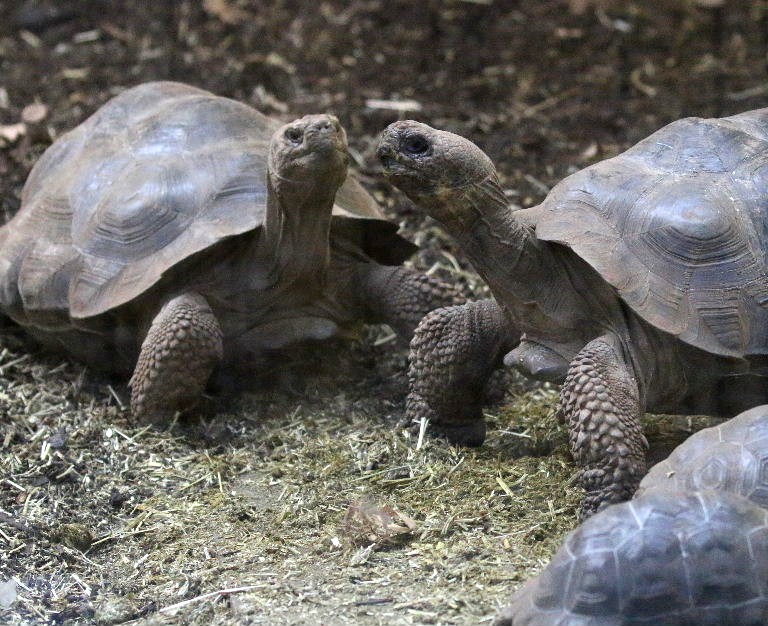Galapagos Giant Tortoise Chelonoidis niger (ex. nigra) complex (prev. Geochelone nigra)


The Galapagos Giant Tortoise is the world's largest tortoise. It is native to several islands of the Galapagos group off Ecuador
(the islands named after a Spanish word for terrapin).
Populations have been decimated by sailors capturing them for long-storage meat supplies and by introduced feral goats, pigs, dogs and rats eating their herbage or young.
Populations have been decimated by sailors capturing them for long-storage meat supplies and by introduced feral goats, pigs, dogs and rats eating their herbage or young.



There are several species (or subspecies) of Galapagos Giant Tortoise (sometimes called races/clades) in different habitats
on the same and different islands. (Sub)species differ particularly in size, shell shape and neck length for grazing or reaching higher vegetation.



Unfortunately, it took Darwin a long time to recognise the evolution of the different sub- or full species (contributuing to development
of his theory of evolution) and it took zoologists even longer.
Since these giants can live over 150 years and, through ignorance, were not segregated by (sub)species, most of those in captivity are hybrids.



Lonesome George, the last of the Pinta Island (Abingdon) (sub)species (a saddle-type neck), received publicity when he passed away in 2012.
Other (sub)species have also become extinct from direct or indirect human activity. There are breeding programmes for most of the remaining
pure-bred species, to bolster remaining wild populations, which remain threatened or critically endangered.
(Captive collections also continue to breed hybrids, which are often infertile or have shorter lifespans.)



The juveniles don't have as much difference between (sub)species' carapace shapes, neck lengths and other features
as the mature adults show. All in the above row are juveniles at different ages. Maturity comes at 15-20 years.



Some carapaces (shells) are widely-domed and are low on the neck for ground grazing tortoises.
Others have a high arch in the front collar area so the tortoise can eat high shrubs (as did the Pinta Island tortoise).
The largest males can reach nearly 2 metres (6 feet) in length and weigh up to 400kg, although they are typically some 300kg with females 150-180kg.





